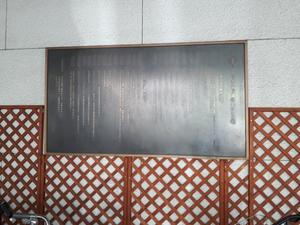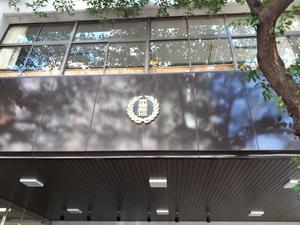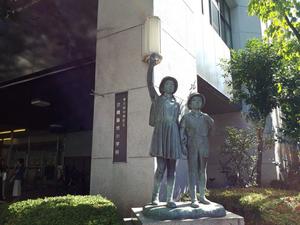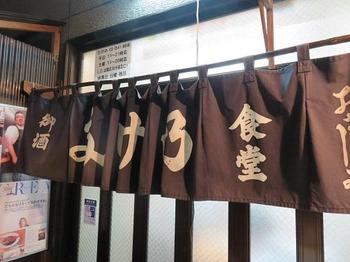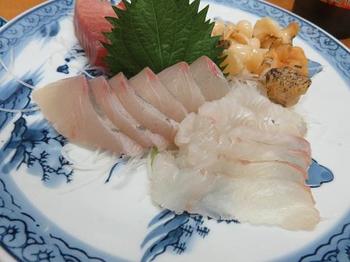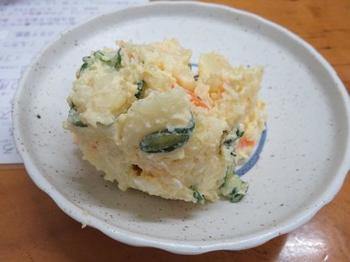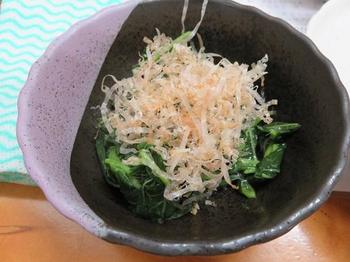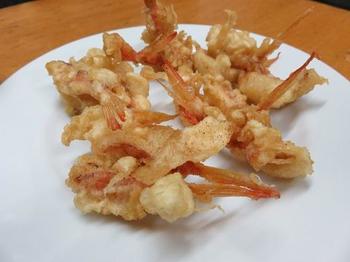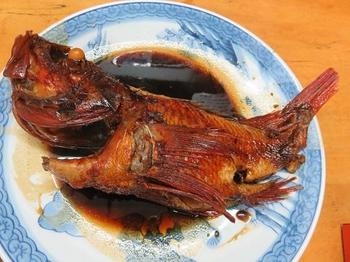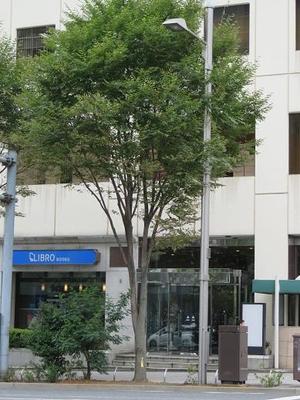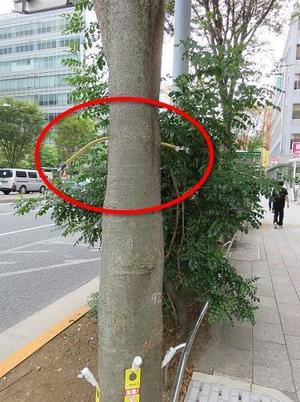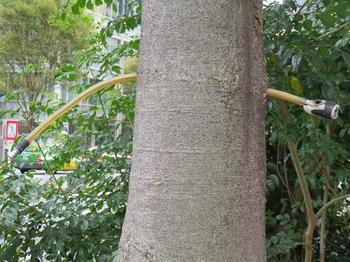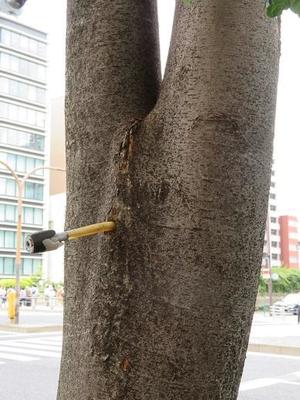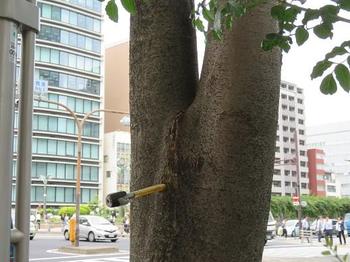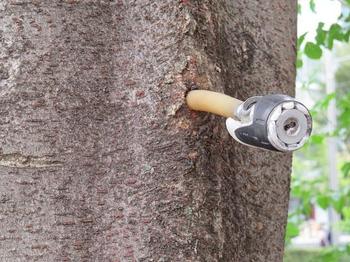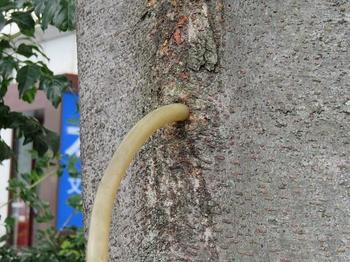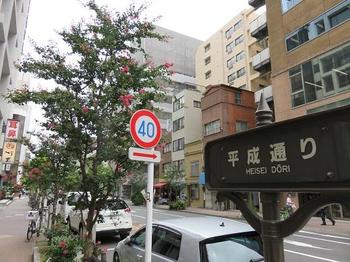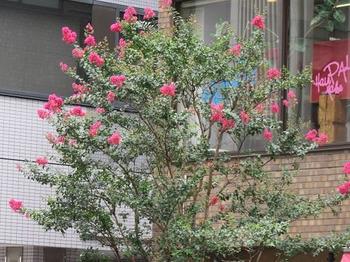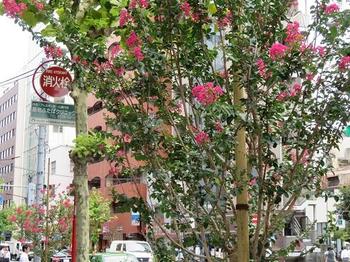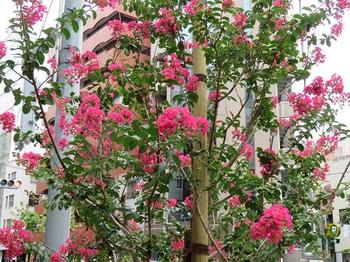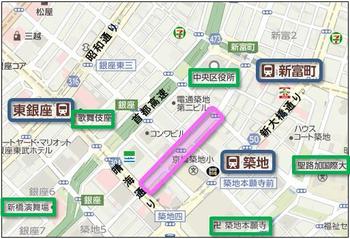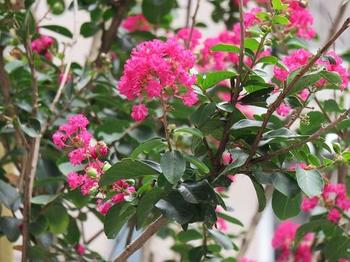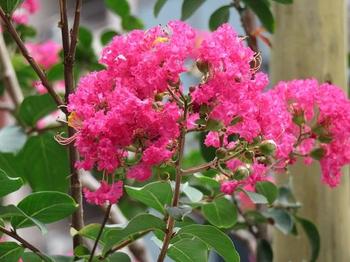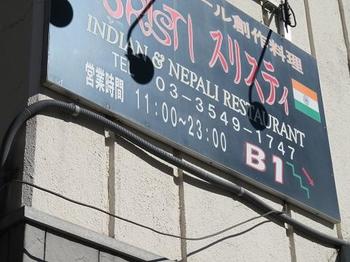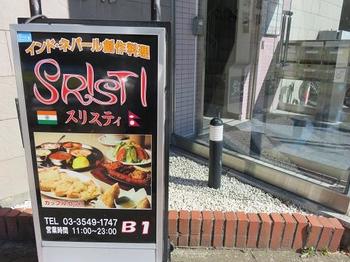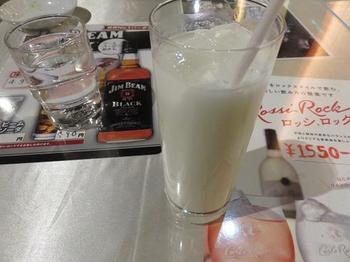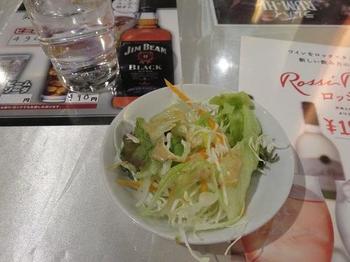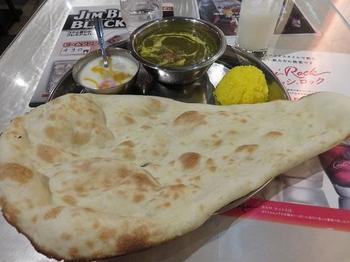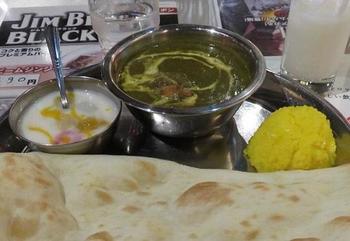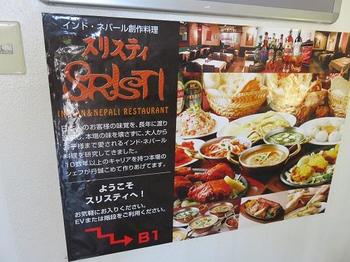One of the urgently needed projects in the Meiji era was education for the people, and the purpose was to increase national power.
 Chuo-ku is a ward that has been focusing on education since the Meiji era. Since the Edo period, it has been located at the foot of Tokugawa Shogun, and commerce was thriving, so reading and writing abacus was essential, and above all, there was a base taught in temple huts and shops. The school system was enacted in 1872, and in the Nihonbashi area, Sakamoto Elementary School and Tokiwa Elementary School were established in commercial areas in 1873, and Hisamatsu Elementary School and Arima Elementary School, which were related to the former clan, were established.
Chuo-ku is a ward that has been focusing on education since the Meiji era. Since the Edo period, it has been located at the foot of Tokugawa Shogun, and commerce was thriving, so reading and writing abacus was essential, and above all, there was a base taught in temple huts and shops. The school system was enacted in 1872, and in the Nihonbashi area, Sakamoto Elementary School and Tokiwa Elementary School were established in commercial areas in 1873, and Hisamatsu Elementary School and Arima Elementary School, which were related to the former clan, were established.
 Speaking of kindergarten, "infant elementary school" was listed as "infant elementary school", and it was designated as "infant elementary school, male and female children up to 6 years old Nomono elementary school Niriru-mae noodle" (Chapter 22). As Japan's first kindergarten, the current kindergarten attached to Ochanomizu Elementary School (a kindergarten attached to Tokyo Women's Normal School) was founded in November 1876. All kindergartens in the early days were modeled on a kindergarten in Frevel, Germany.
Speaking of kindergarten, "infant elementary school" was listed as "infant elementary school", and it was designated as "infant elementary school, male and female children up to 6 years old Nomono elementary school Niriru-mae noodle" (Chapter 22). As Japan's first kindergarten, the current kindergarten attached to Ochanomizu Elementary School (a kindergarten attached to Tokyo Women's Normal School) was founded in November 1876. All kindergartens in the early days were modeled on a kindergarten in Frevel, Germany.
 How did kindergarten develop in Chuo-ku? I am surprised by the high vision from the Meiji era for education in Chuo-ku.
How did kindergarten develop in Chuo-ku? I am surprised by the high vision from the Meiji era for education in Chuo-ku.
*********************************************************
Introducing Kyobashi Asaumi Kindergarten and Tokiwa Kindergarten, which were founded in the Meiji period.

 Kyobashi Asaumi Kindergarten
Kyobashi Asaumi Kindergarten
The history of early childhood education in Chuo-ku is old, and before the "Kindergarten Ordinance" was promulgated in April 1926, "Kyobashi Ward Kindergarten" (currently Nihonbashi Kindergarten) in 1889 and "Tokiwa Kindergarten - Closed" in 1895, "Sakamoto Kindergarten - Closed" and "Nihonbashi Joto Kindergarten" (currently Showa Kindergarten" in Nihonbashi Daiichi Kindergarten and 50, 50.
 There is a story of an old man who recognized the need for a kindergarten in 1888 and kept the children of good men and women who came to visit a building in Nishi Honganji Temple in a room of the temple.
There is a story of an old man who recognized the need for a kindergarten in 1888 and kept the children of good men and women who came to visit a building in Nishi Honganji Temple in a room of the temple.
 In May 1889, the Kyobashi Ward Office submitted an application as a public kindergarten, and in July 1890, the Kyobashi Ward Kindergarten was approved. The school building was newly built near the Kyobashi Post Office.
In May 1889, the Kyobashi Ward Office submitted an application as a public kindergarten, and in July 1890, the Kyobashi Ward Kindergarten was approved. The school building was newly built near the Kyobashi Post Office.
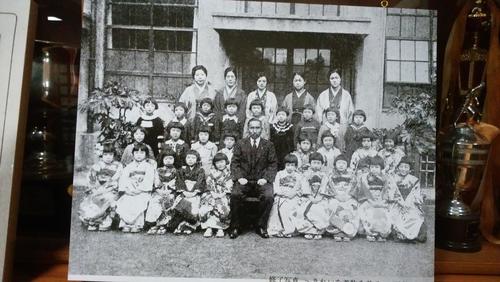
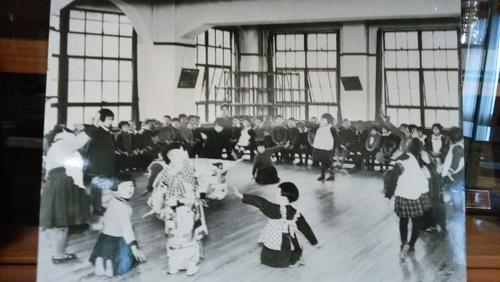
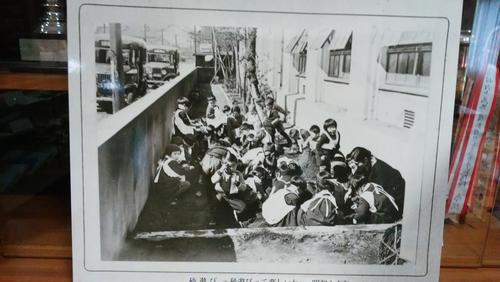
 In April 1901, it was changed to a kindergarten attached to the morning sea ordinary elementary school. In February 1909, a fire from a neighbor destroyed the school building along with the elementary school building, and continued childcare at a nearby printing factory. November 1909 Kyobashi Elementary School was established, and Asaumi Elementary School and Kindergarten were changed designation.
In April 1901, it was changed to a kindergarten attached to the morning sea ordinary elementary school. In February 1909, a fire from a neighbor destroyed the school building along with the elementary school building, and continued childcare at a nearby printing factory. November 1909 Kyobashi Elementary School was established, and Asaumi Elementary School and Kindergarten were changed designation.
 In 1907, there were less than 110 children.
In 1907, there were less than 110 children.
 In 1910, there was a garden building in Tsukiji Women's Hirone Elementary School (2-12 Tsukiji, near the Shochiku headquarters).
In 1910, there was a garden building in Tsukiji Women's Hirone Elementary School (2-12 Tsukiji, near the Shochiku headquarters).
 In February 1911, Asaumi Elementary School was rebuilt at its current location (2-13-2 Tsukiji) and opened in April as Tsukiji Hirone Elementary School.
In February 1911, Asaumi Elementary School was rebuilt at its current location (2-13-2 Tsukiji) and opened in April as Tsukiji Hirone Elementary School.
 In March 1911, due to the increase in the number of children and childcare needs, it became independent from elementary school and renamed Asami Kindergarten in Tokyo. As before, the school building uses the school building of the former Tsukiji Women's Hirone Elementary School. Hide Chiba has been appointed as a full-time director. As the only public kindergarten in Kyobashi Ward, and as one of the few German Tatesono in the city, substantial childcare was carried out, the purchase of playground equipment from the United States, and the fact that children went to school from all over Tokyo. I can see.
In March 1911, due to the increase in the number of children and childcare needs, it became independent from elementary school and renamed Asami Kindergarten in Tokyo. As before, the school building uses the school building of the former Tsukiji Women's Hirone Elementary School. Hide Chiba has been appointed as a full-time director. As the only public kindergarten in Kyobashi Ward, and as one of the few German Tatesono in the city, substantial childcare was carried out, the purchase of playground equipment from the United States, and the fact that children went to school from all over Tokyo. I can see.
 September 28, 1914 The new garden building was completed. This day is the anniversary of the opening of the park. December 1921 Renamed Kyobashi Asaumi Kindergarten, Tokyo City. The garden building was burned down due to the Great Kanto Earthquake in September 1923, and childcare resumed in one room at the earthquake disaster detention camp at the site of the elementary school in October.
September 28, 1914 The new garden building was completed. This day is the anniversary of the opening of the park. December 1921 Renamed Kyobashi Asaumi Kindergarten, Tokyo City. The garden building was burned down due to the Great Kanto Earthquake in September 1923, and childcare resumed in one room at the earthquake disaster detention camp at the site of the elementary school in October.
 Temporary garden building was completed near the elementary school pool as of September 1924 (2-18 Tsukiji).
Temporary garden building was completed near the elementary school pool as of September 1924 (2-18 Tsukiji).
 June 30, 1928 Completed a reinforced concrete building
June 30, 1928 Completed a reinforced concrete building
 In 1933, he retired from Chiba Hide. Since then, Chiko Chiko, the principal of the school, became the principal of the school. Based on the tradition of Tatesono in Germany, the company continued its substantial management as an attached garden.
In 1933, he retired from Chiba Hide. Since then, Chiko Chiko, the principal of the school, became the principal of the school. Based on the tradition of Tatesono in Germany, the company continued its substantial management as an attached garden.
 July 1943 Renamed Kyobashi Asaumi Kindergarten in Tokyo.
July 1943 Renamed Kyobashi Asaumi Kindergarten in Tokyo.
 May 1944 Closed due to emergency measures during the war
May 1944 Closed due to emergency measures during the war
 Reopened in September 1946
Reopened in September 1946
 April 1947 Renamed Kyobashi Asaumi Kindergarten, Chuo-ku
April 1947 Renamed Kyobashi Asaumi Kindergarten, Chuo-ku
*********************************************************

 Tokiwa Kindergarten
Tokiwa Kindergarten
 In April 1895, as a kindergarten attached to Joban Hirone Elementary School in Tokyo, a 60-tsubo one-story building was constructed on the premises of the current Mitsui Building No. 2 (5 Hon leather-cho, Nihonbashi-ku) and opened on the premises of the elementary school. The total cost of this project is 1,915 yen, and is funded by volunteers who recognize the need for early childhood education.
In April 1895, as a kindergarten attached to Joban Hirone Elementary School in Tokyo, a 60-tsubo one-story building was constructed on the premises of the current Mitsui Building No. 2 (5 Hon leather-cho, Nihonbashi-ku) and opened on the premises of the elementary school. The total cost of this project is 1,915 yen, and is funded by volunteers who recognize the need for early childhood education.
 According to the application for the establishment of a kindergarten attached to Joban Hirone Elementary School submitted by the mayor of Nihonbashi to the Governor of Tokyo in December 1894, the kindergarten at that time was set up in a kindergarten attached to Joban Hirone Elementary School. Childcare hours are less than 4 hours a day, 70 mothers and 3 children are 6 nursery rooms, 0 stories, and 2 nursery rooms are open.
According to the application for the establishment of a kindergarten attached to Joban Hirone Elementary School submitted by the mayor of Nihonbashi to the Governor of Tokyo in December 1894, the kindergarten at that time was set up in a kindergarten attached to Joban Hirone Elementary School. Childcare hours are less than 4 hours a day, 70 mothers and 3 children are 6 nursery rooms, 0 stories, and 2 nursery rooms are open.
 In 1897, there were 150 children.
In 1897, there were 150 children.
 April 1902 The name of the garden "Tokiwa" was changed to "Tokiwa" by the kindergarten attached to Tokiwa Hirone Elementary School in Tokyo and the spirit of Prince Akihito Komatsumiya.
April 1902 The name of the garden "Tokiwa" was changed to "Tokiwa" by the kindergarten attached to Tokiwa Hirone Elementary School in Tokyo and the spirit of Prince Akihito Komatsumiya.
 In 1904, he moved to his current location (1-chome Honishicho, Nihonbashi-ku) with an elementary school, and at that time purchased a connection location of 273.24 tsubo.
In 1904, he moved to his current location (1-chome Honishicho, Nihonbashi-ku) with an elementary school, and at that time purchased a connection location of 273.24 tsubo.
 In 1907, there were 121 children.
In 1907, there were 121 children.
 The new garden building was completed in July 1908.
The new garden building was completed in July 1908.
 The garden building was completely burned down due to the Great Kanto Earthquake in September 1923, and childcare resumed in the same area.
The garden building was completely burned down due to the Great Kanto Earthquake in September 1923, and childcare resumed in the same area.
 Relocated to a temporary garden building (2-chome Muromachi, Nihonbashi-ku) for renovation in January 1928.
Relocated to a temporary garden building (2-chome Muromachi, Nihonbashi-ku) for renovation in January 1928.
 In 1929, the temporary garden building was renovated at the current location (4-2-12 Nihonbashi Motoishicho).
In 1929, the temporary garden building was renovated at the current location (4-2-12 Nihonbashi Motoishicho).
 In 1934, the name was changed to Tokiwa Kindergarten in Tokyo.
In 1934, the name was changed to Tokiwa Kindergarten in Tokyo.
 In 1937, the main building of the building was completed. The construction cost was 45,000 yen due to donations from volunteers at that time, but was transferred to the ward after completion. It features a 31.5 tatami mats between Japan (comparatory room) consisting of four rooms, a brush pattern on the wall, and the stairs were designed for infants.
In 1937, the main building of the building was completed. The construction cost was 45,000 yen due to donations from volunteers at that time, but was transferred to the ward after completion. It features a 31.5 tatami mats between Japan (comparatory room) consisting of four rooms, a brush pattern on the wall, and the stairs were designed for infants.
 July 1943 The name was changed to Tokiwa Kindergarten, Tokyo.
July 1943 The name was changed to Tokiwa Kindergarten, Tokyo.
 May 1944 Closed due to emergency measures during the war.
May 1944 Closed due to emergency measures during the war.
 Reopened in September 1946
Reopened in September 1946
 April 1947 Renamed Tokiwa Kindergarten in Chuo Ward.
April 1947 Renamed Tokiwa Kindergarten in Chuo Ward.
 Tokiwa Kindergarten Entrance
Tokiwa Kindergarten Entrance
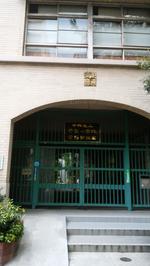
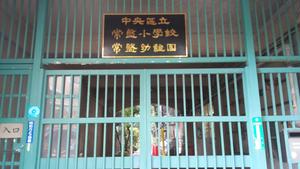
 1st to 2nd floor, rooftop stairs
1st to 2nd floor, rooftop stairs
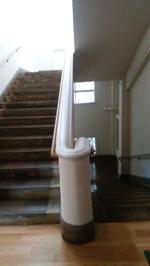
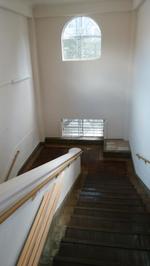
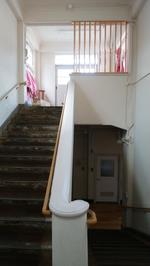
 Rooftop round windows and rooftops
Rooftop round windows and rooftops
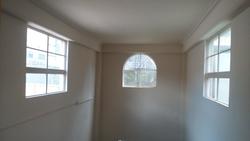
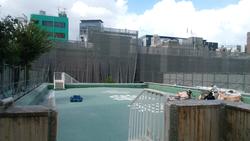
 Nursery rooms and corridors on the second floor
Nursery rooms and corridors on the second floor
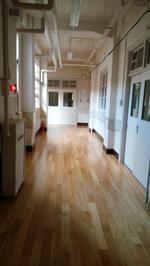
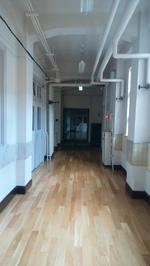
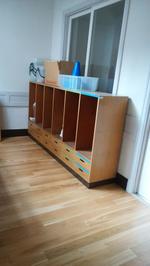
 Japan, hanging scrolls, furnaces
Japan, hanging scrolls, furnaces
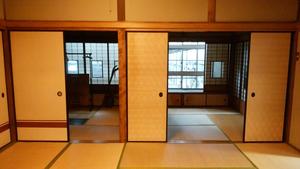
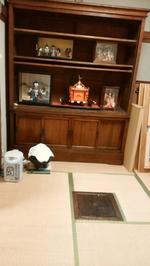
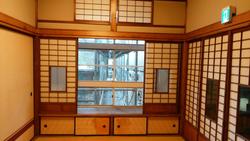
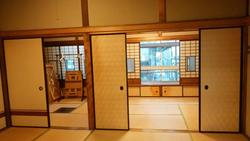
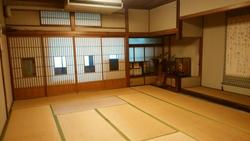
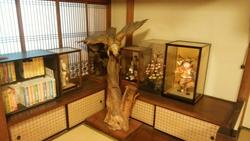
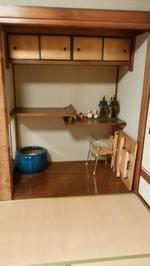


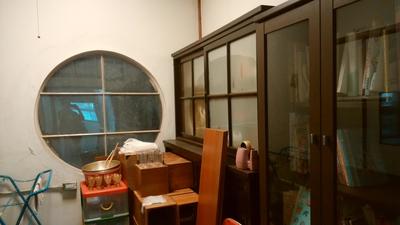
 Because the children of the family going to a kindergarten from the Meiji era were located in a commercial area, there were many shops boasting old goodwill, saying, "Every boy and girl wearing beautiful kimonos and accompanied by a grandmother and a girl. It was like a Ichimatsu doll," said the old man. She was dressed in Japanese clothes and white aprons.
Because the children of the family going to a kindergarten from the Meiji era were located in a commercial area, there were many shops boasting old goodwill, saying, "Every boy and girl wearing beautiful kimonos and accompanied by a grandmother and a girl. It was like a Ichimatsu doll," said the old man. She was dressed in Japanese clothes and white aprons.
*********************************************************
 Sakamoto Kindergarten paid more than 23 hours a week for childcare and 1 yen a month for childcare. Arima Elementary School (Nihonbashi High School) also costs 1 yen per month, so it was the same as elementary school.
Sakamoto Kindergarten paid more than 23 hours a week for childcare and 1 yen a month for childcare. Arima Elementary School (Nihonbashi High School) also costs 1 yen per month, so it was the same as elementary school.
 Construction cost-April 1895 As a kindergarten attached to Sakamoto Hirojo Elementary School in Tokyo City, a wooden one-story building of 84 tsubo, 2 go 5 shaku was constructed on the elementary school premises, and the total cost was 3,130 yen.
Construction cost-April 1895 As a kindergarten attached to Sakamoto Hirojo Elementary School in Tokyo City, a wooden one-story building of 84 tsubo, 2 go 5 shaku was constructed on the elementary school premises, and the total cost was 3,130 yen.
 In 1898, the Flabel Society submitted the "Kindergarten System Niseki Suru Proposal" to the Minister of Education. June 1899 Promulgation of "Kindergarten Childcare and Facilities Regulations" 1 Kindergarten is about to raise infants from the age of three to elementary school. ②The number of childcare hours shall be within 5 hours a day. ③The number of children to be nursed by a baby nurse shall be 40 or less. 1 The number of kindergartens in kindergarten shall be less than 100, and can be increased to 150 in special circumstances. ④Childcare items will be played, singing songs, conversations, and techniques. ⑤The building must be a one-story building with a nursery room, play room, staff room, etc. ⑥The provision of benefits, paintings, play tools, musical instruments, blackboards, desks, chairs, watches, thermometers, heating equipment, etc., and the summary of childcare was also established. -Based on the promulgation of the Elementary School Ordinance in 1890, based on that thought, it was stipulated in the form necessary for that thought. -In the past, it was based on the kindergarten rules attached to the Tokyo Women's High School Normal School, but it was important that detailed legal regulations were established for the first time.
In 1898, the Flabel Society submitted the "Kindergarten System Niseki Suru Proposal" to the Minister of Education. June 1899 Promulgation of "Kindergarten Childcare and Facilities Regulations" 1 Kindergarten is about to raise infants from the age of three to elementary school. ②The number of childcare hours shall be within 5 hours a day. ③The number of children to be nursed by a baby nurse shall be 40 or less. 1 The number of kindergartens in kindergarten shall be less than 100, and can be increased to 150 in special circumstances. ④Childcare items will be played, singing songs, conversations, and techniques. ⑤The building must be a one-story building with a nursery room, play room, staff room, etc. ⑥The provision of benefits, paintings, play tools, musical instruments, blackboards, desks, chairs, watches, thermometers, heating equipment, etc., and the summary of childcare was also established. -Based on the promulgation of the Elementary School Ordinance in 1890, based on that thought, it was stipulated in the form necessary for that thought. -In the past, it was based on the kindergarten rules attached to the Tokyo Women's High School Normal School, but it was important that detailed legal regulations were established for the first time.
 When the elementary school ordinance was revised in August 1900, some amendments such as "You can have a director in kindergarten" were added and included in the enforcement regulations. Regarding the qualifications of the public kindergarten director, `` Precautions for Construction '' also refer to `` Lid-shi Nursery School Tal Rushite Light Business Nyaras or Nursery School Requirement requirements for recuperation of elementary school children and Boss influence of children. Required qualifications and qualifications equivalent to Tal's education teacher Tal's equivalent basic treatment requirements ”. "Homo Testha Elementary School Teacher Examination Committee Nio Teno Yukihi" The degree was determined to be equal to or greater than the regular elementary school main teacher. The treatment of the director of the public kindergarten and the nurse was given to the judge.
When the elementary school ordinance was revised in August 1900, some amendments such as "You can have a director in kindergarten" were added and included in the enforcement regulations. Regarding the qualifications of the public kindergarten director, `` Precautions for Construction '' also refer to `` Lid-shi Nursery School Tal Rushite Light Business Nyaras or Nursery School Requirement requirements for recuperation of elementary school children and Boss influence of children. Required qualifications and qualifications equivalent to Tal's education teacher Tal's equivalent basic treatment requirements ”. "Homo Testha Elementary School Teacher Examination Committee Nio Teno Yukihi" The degree was determined to be equal to or greater than the regular elementary school main teacher. The treatment of the director of the public kindergarten and the nurse was given to the judge.
 1911-11 Childcare hours less than 5 hours per day ⇒ 5 hours or more 2 kindergarten children "100 or less" ⇒ 120 or less in special cases, 140 or less and 3 nursery mothers 40 or less ⇒ 40 or less of 40 or less, and more than 40 childcare items such as "Kindergarten Shinobi elementary school"
1911-11 Childcare hours less than 5 hours per day ⇒ 5 hours or more 2 kindergarten children "100 or less" ⇒ 120 or less in special cases, 140 or less and 3 nursery mothers 40 or less ⇒ 40 or less of 40 or less, and more than 40 childcare items such as "Kindergarten Shinobi elementary school"
 Changes in childcare content-The kindergarten at the end of the Meiji era provided childcare with poor liquidity, centered on German frabe-style benefits. Flabel's childcare was an emphasis on, respect, and trust of the creativity of infants, but because the benefits were so well-organized, only that form was accepted. Eventually, criticism of benefits was introduced by the U.S. childcare world, and in the Taisho era, he progressed to childcare centered on the activities of infants himself. In other words, it became a kindergarten that taught me to live.
Changes in childcare content-The kindergarten at the end of the Meiji era provided childcare with poor liquidity, centered on German frabe-style benefits. Flabel's childcare was an emphasis on, respect, and trust of the creativity of infants, but because the benefits were so well-organized, only that form was accepted. Eventually, criticism of benefits was introduced by the U.S. childcare world, and in the Taisho era, he progressed to childcare centered on the activities of infants himself. In other words, it became a kindergarten that taught me to live.
 In the Meiji and Taisho eras, the establishment of public kindergartens was delayed due to the fact that he became a sixth grader at ordinary elementary school and the priority was given to the enhancement of public elementary schools. In addition, the revision of the elementary school ordinance and elementary school thinking rules in April 1911 eased restrictions on the number of kindergarten children, facilitated the establishment of private kindergartens, increased rapidly, and became a private kindergarten independent place . In the Nihonbashi area, there were seven private kindergartens for four public kindergartens, but in the Showa era, the establishment of public kindergartens increased, and one private kindergarten disappeared.
In the Meiji and Taisho eras, the establishment of public kindergartens was delayed due to the fact that he became a sixth grader at ordinary elementary school and the priority was given to the enhancement of public elementary schools. In addition, the revision of the elementary school ordinance and elementary school thinking rules in April 1911 eased restrictions on the number of kindergarten children, facilitated the establishment of private kindergartens, increased rapidly, and became a private kindergarten independent place . In the Nihonbashi area, there were seven private kindergartens for four public kindergartens, but in the Showa era, the establishment of public kindergartens increased, and one private kindergarten disappeared.
 On April 22, 1926, a kindergarten ordinance was designated, and in Chuo-ku, a kindergarten was set up using an independent school building and an empty classroom of an elementary school, saying, "Kindergarten Ha Elementary School Attached Sulkotonari Tokutoku". I have. Currently, except for the independent school building Tsukishima kindergarten, there are elementary schools and kindergartens.
On April 22, 1926, a kindergarten ordinance was designated, and in Chuo-ku, a kindergarten was set up using an independent school building and an empty classroom of an elementary school, saying, "Kindergarten Ha Elementary School Attached Sulkotonari Tokutoku". I have. Currently, except for the independent school building Tsukishima kindergarten, there are elementary schools and kindergartens.
Currently, there are only public kindergartens in Chuo-ku, which is rare in Tokyo, and there is no private kindergarten. Such a rare situation nationwide seems to be a sign of a strong attitude toward education in Chuo-ku. .
"Ayumi of Chuo-ku Education 100 Years", March 30, 1974, Chuo-ku Board of Education issued a reference.
(Mr. Naofumi Taketani, Chuo-ku Kyobashi Asaumi Kindergarten Director, Chuo-ku Tokiwa Kindergarten Director, Yu Saito, gave the consent of the photo.)
